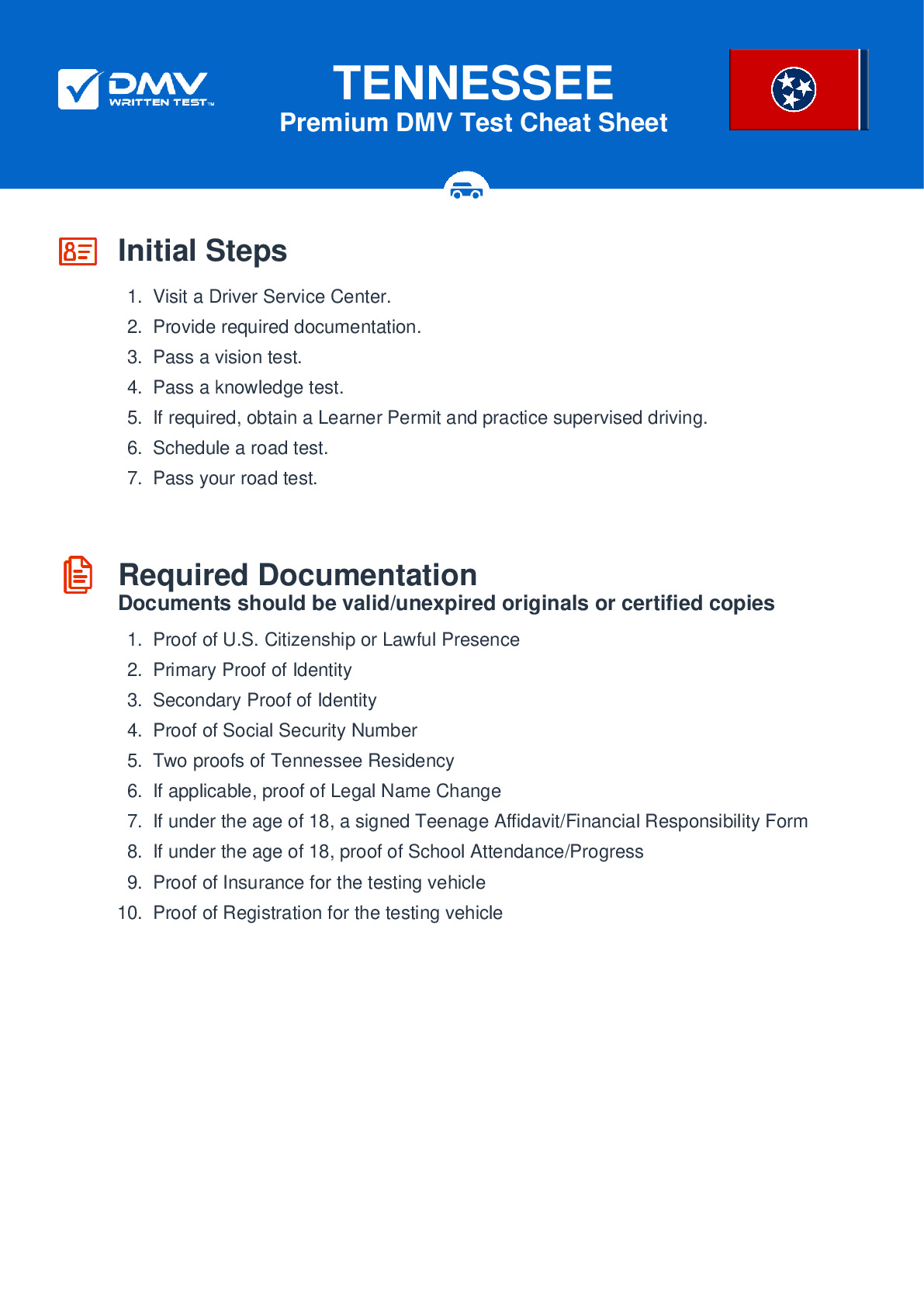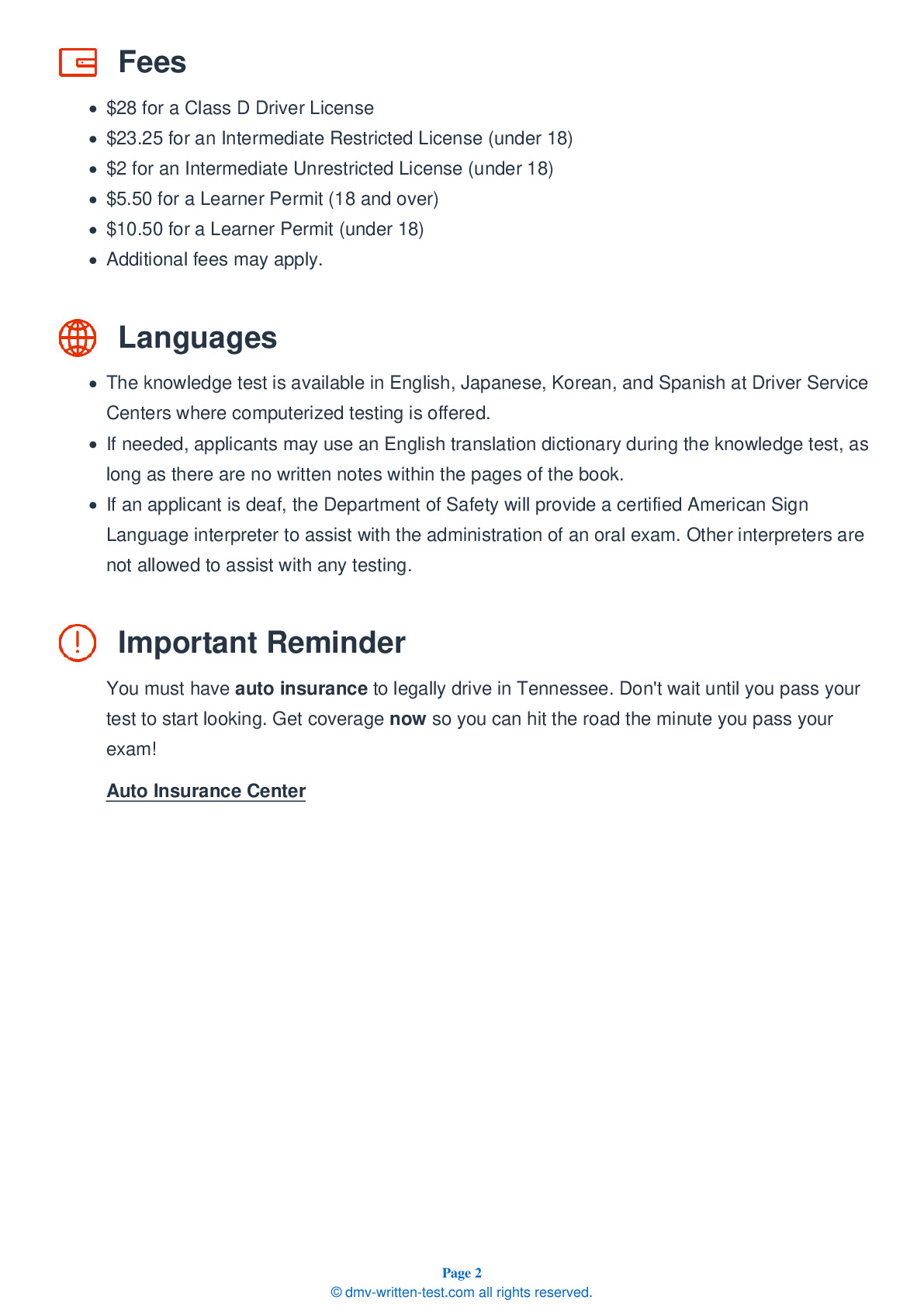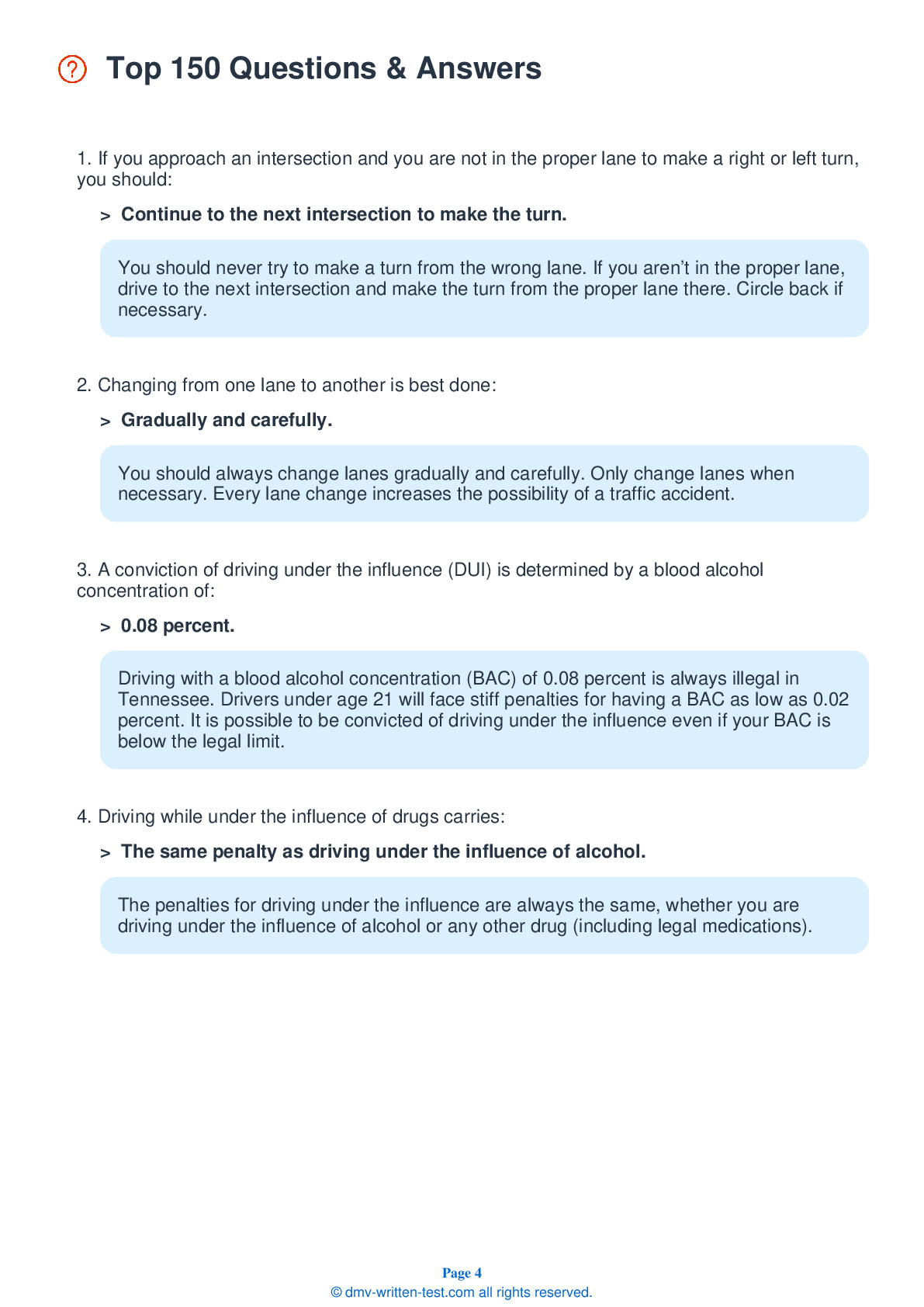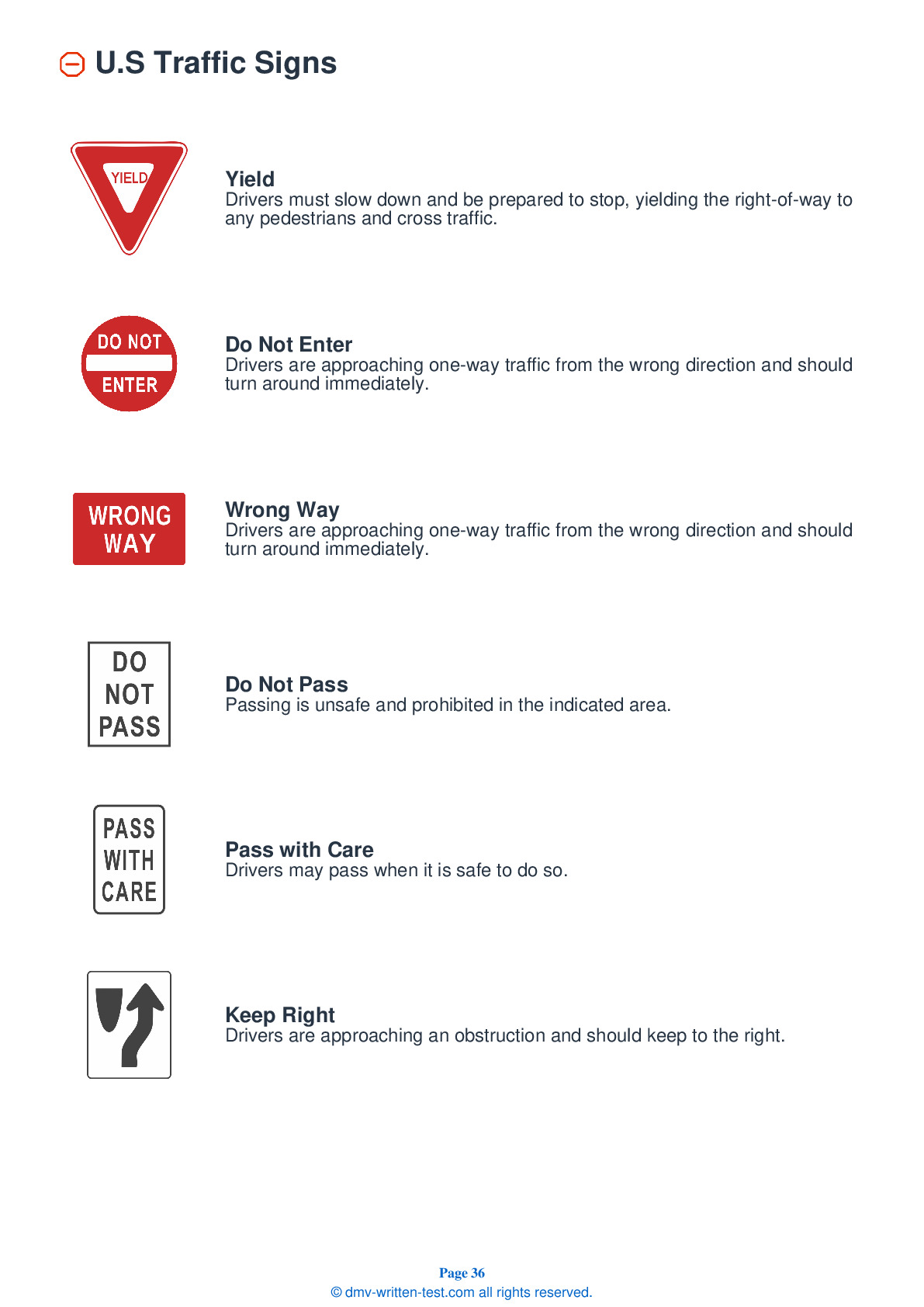2025 Tennessee Permit Test 14
The following questions are from real DMV written tests. These are some of the actual permit questions you will face in Tennessee. Each permit practice test question has three answer choices. Select one answer for each question and select "grade this section." You can find this button at the bottom of the drivers license quiz. For a complete list of questions and answers for Tennessee please visit https://cheat-sheets.dmv-written-test.com/en/tennessee/car.
Number of Tests
Number of Question
Passing Score
25. A major cause of fatal traffic accidents in Tennessee is:
Explanation
Drivers traveling at speeds above the safe and legal speed limit is a major contributing factor to fatal traffic accidents in Tennessee.
26. A broken yellow line between two lanes of traffic means:
Explanation
Dashed yellow lines separate single lanes of traffic moving in opposite directions. Passing is allowed when there is no oncoming traffic in the passing lane.
27. To improve visibility lowered by rain or fog, drivers should use their:
Explanation
Low beam headlights should be used when driving in rainy or foggy weather. Even if they do little to help you see, low beams will make it easier for others to see you.
28. When parking your vehicle on any hill:
Explanation
When parking on a hill, you should always leave your vehicle in gear or in the "park" position. If there is no curb, you should turn your front wheels so that the vehicle will roll away from the center of the road if the brakes fail. If there is a curb, the front wheels should be turned toward it (if headed downhill) or away from and gently touching it (if headed uphill).
29. The child restraint law requires all children under the age of ____ to be placed in an approved child restraint device while in a moving vehicle.
Explanation
When in a moving vehicle, a child under one year old, or weighing less than 20 pounds, must be in a child passenger restraint system that is facing the rear of the car. Children who are between one and three years old, and who weigh more than 20 pounds, must be in a child passenger restraint system that is facing forward. Children who are between four and eight years old, and under 4' 9" tall, must be in a belt positioning booster seat system and wearing a seat belt.
30. When you are behind a motorcycle, you should:
Explanation




